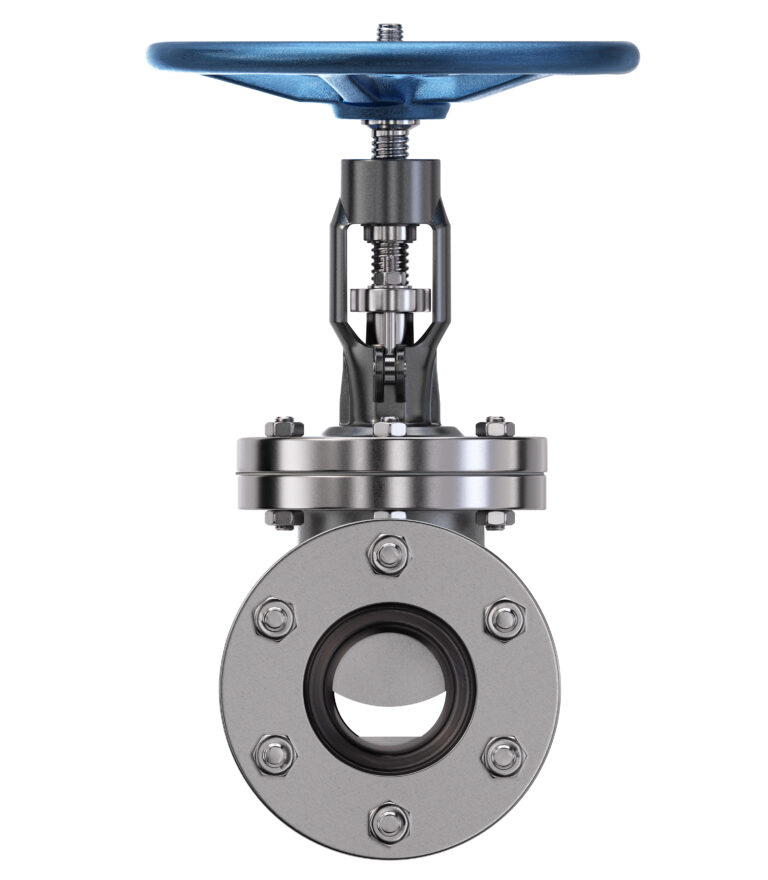gate valves
All You Need To Know About Gate Valves
A gate valve, also known as a sluice valve, is a type of valve that opens by lifting a barrier (gate) out of the path of the fluid. They are primarily used to permit or prevent the flow of liquids; they are either fully open or fully closed.
Body
The body, also known as the shell, is the main part of the valve that contains the fluid to be controlled. It is typically connected to other equipment by means of flanged, screwed, or welded connections.
Bonnet
The bonnet is the part of the valve that houses the moving parts. It is usually bolted to the body and provides a leakproof closure at the top. The bonnet can also contain the packing materials that prevent leakage around the stem.
Stem
The stem is the component that connects the actuator (handwheel or motor) to the gate. It is responsible for moving the gate into the open or closed position. The stem can be a rising stem, which moves up and down as the valve is operated, or a non-rising stem, which remains stationary.
Handwheel or Actuator
The handwheel or actuator is used to operate the valve. Turning the handwheel or activating the actuator moves the stem, which in turn moves the gate. In some cases, the valve may be automated and the actuator can be a motor or a pneumatic or hydraulic cylinder.
GATE
The gate is the movable barrier that opens and closes to control the flow of fluid. It can be a wedge shape, a parallel disk configuration, or a solid disk.
SEAT
The seat is the interior surface in the body which the gate contacts to form a leak-tight seal. The seat can be integral with the body or it can be a separate component that is attached to the body.
TYPE BY connection design
Flanged Gate Valves: These valves have flanges on both ends that are bolted to the piping system. The flanges can be raised face or flat face, and the type of flange used depends on the requirements of the system. Flanged gate valves are easy to install and remove, making them suitable for applications where regular maintenance is required.
Threaded Gate Valves: These valves have threaded ends that screw directly into the piping system. They are typically used in smaller piping systems and for applications where the pressure is not too high. Threaded gate valves are also known as screwed gate valves.
Welded Gate Valves: These valves are permanently welded into the piping system. There are two types of welded gate valves: butt-weld and socket-weld. Butt-weld gate valves are used in larger piping systems, while socket-weld gate valves are used in smaller piping systems. Welded gate valves are used in applications where a strong, leak-proof connection is required.
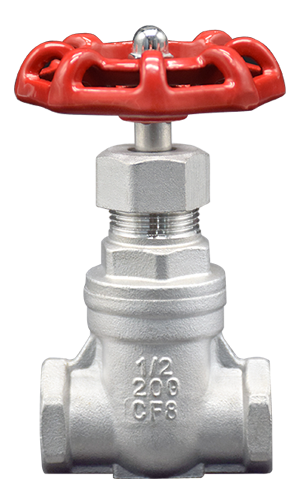
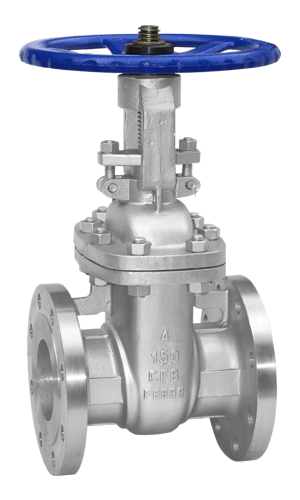
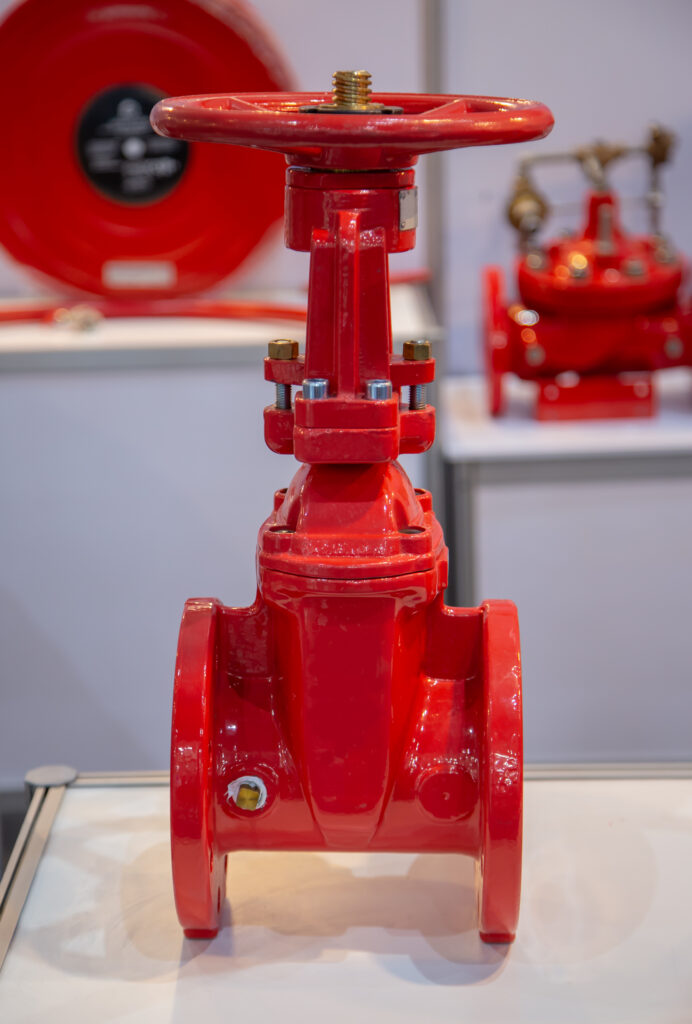
TYPE BY stem design
Rising Stem Gate Valves: In a rising stem gate valve, the stem rises as the valve is opened and lowers as the valve is closed. This happens because the stem is threaded and mated with the bushing threads of the yoke. When the handwheel is turned, it drives the stem up or down, moving the gate along with it. This design allows for an immediate visual indication of the valve’s status: if the stem is raised, the valve is open; if the stem is lowered, the valve is closed. Rising stem gate valves are commonly used when it’s important to know by a quick glance whether the valve is open or closed.
Non-Rising Stem Gate Valves: In a non-rising stem gate valve, the stem does not rise or lower. Instead, the gate travels up and down the stem like a nut on a bolt. The stem is threaded on its lower end, and as the handwheel on top is turned, the gate moves up or down the stem on the threads, while the stem itself remains vertically stationary. This design is used where vertical space is limited or underground where the stem would be difficult to see.
Gate Valve Types By Gate Design
Wedge Gate Valves: These valves have a wedge-shaped gate that fits between two inclined seats. The wedge shape of the gate and the inclined seats allow for a tight seal to be formed when the valve is closed. There are three types of wedge gate valves: solid wedges, flexible wedges, and split wedges. The choice of which to use depends on the specific requirements of the system.
Parallel Gate Valves: These valves have a flat gate between two parallel seats. Parallel gate valves often use a floating gate, which is pushed against the seat by the medium pressure to ensure a tight seal. Some parallel gate valves use two gates with a mechanism to compress the gates against the seats.
Knife Gate Valves: These valves have a thin, sharp gate that can cut through thick fluids and slurries. Knife gate valves are typically used in applications where the fluid has a high concentration of suspended solids, such as in the pulp and paper industry.
Slab Gate Valves: These valves have a simple, single-piece, rectangular gate that slides between two parallel seats. Slab gate valves are typically used in applications where a straight-line flow and minimum restriction is required, such as in the oil and gas industry.
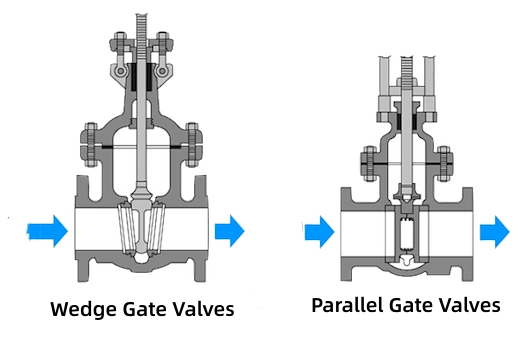
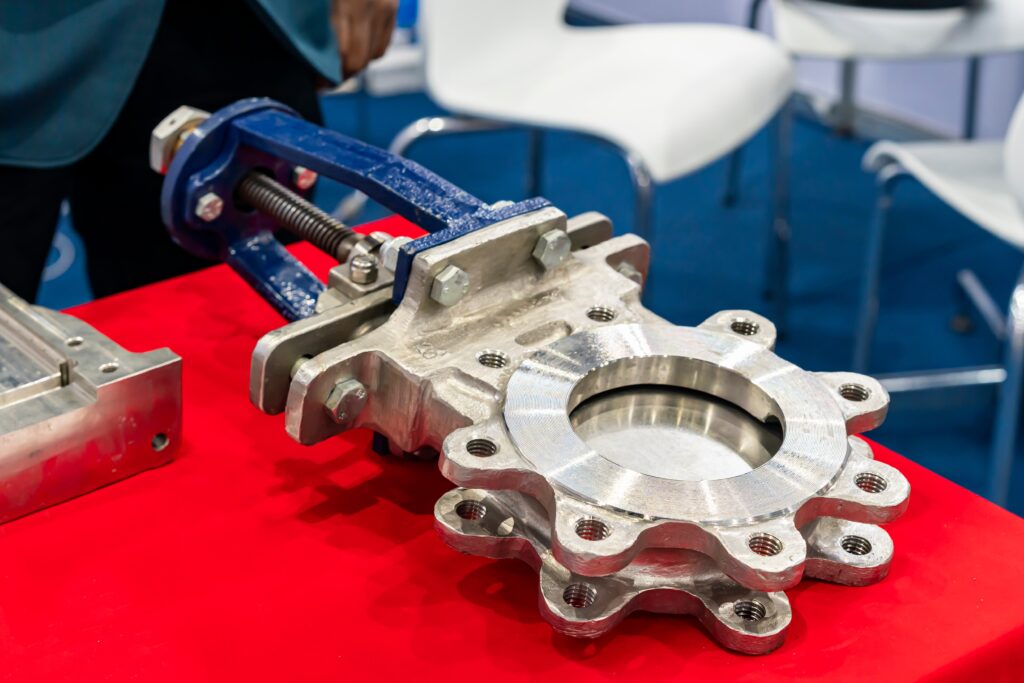
GATE VALVE Types By Seat Design
Metal-Seated Gate Valves:
These are traditional gate valves where the gate and seats are made of metal. When the gate is closed, metal to metal contact occurs between the gate and the seats. This design is durable and can withstand high temperatures and pressures, but it may not provide a completely leak-proof seal.
Resilient Seated Gate Valves: These valves feature a seat made of resilient material, often rubber, that flexes or deforms slightly to provide a tight seal when the gate is closed. The gate itself is usually made of metal, and when it comes into contact with the resilient seat, the seat deforms to accommodate the gate and form a seal. This design allows for a very tight seal that can effectively prevent leaks, even at low pressure differentials.
Gate Valve Types By Bonnet Design
Bolted-Bonnet Gate Valves: This is the most common design where the bonnet is bolted to the valve body. This design allows for easy maintenance and repair as the bonnet can be removed to access the internal parts of the valve.
Screwed Bonnet Gate Valves: This design features a bonnet that is screwed into the valve body. It’s a simple and compact design often used for smaller, low-pressure valves.
Pressure-Seal Bonnet Gate Valves: These valves are designed for high-pressure applications. The bonnet is sealed to the valve body by the pressure of the fluid in the valve. As the pressure increases, the seal becomes tighter. This design is suitable for high-pressure applications but can be more difficult to maintain and repair.
Union Bonnet Gate Valves: In this design, the bonnet is connected to the body of the valve with a threaded union. This allows for easy removal of the bonnet for maintenance and inspection.
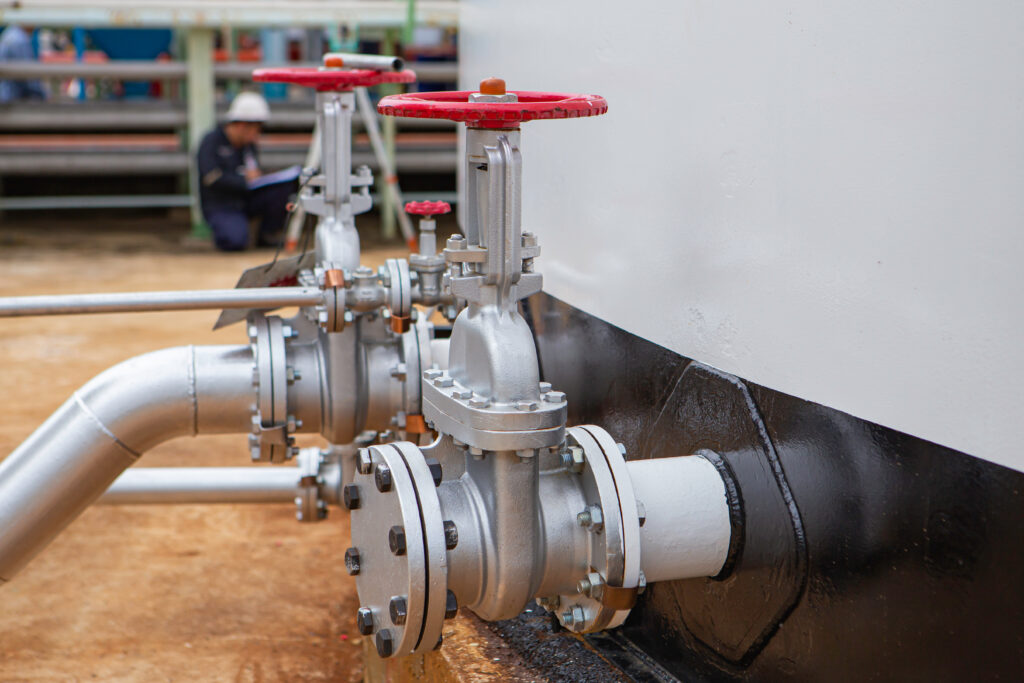
GATE VALVE VS BALL VALVE
While both ball valves and gate valves fall under the category of on/off valves, their designs differ in several ways.
Ball valves operate by rotating a ball, which has a hole drilled through its center, by a quarter turn to allow the flow of media. Conversely, gate valves function by vertically lifting or lowering a gate mechanism through the rotation of a handwheel.
Due to the design of the gate mechanism, gate valves typically have a lower likelihood of leakage compared to ball valves.
Closed Position: When the gate valve is in the closed position, the ‘gate’ or ‘disc’ is dropped into the path of the fluid flow. This gate is typically wedge-shaped and fits snugly into a matching seat, effectively blocking the flow of fluid.
Opening the Valve: To open the valve, the operator turns the handwheel in a counter-clockwise direction. This action engages the stem, which is connected to the gate. As the stem is threaded, turning the handwheel causes the stem (and the attached gate) to rise.
Open Position: As the handwheel is turned, the gate moves up and away from the fluid path. When the gate valve is fully open, the gate is completely clear of the fluid path, allowing fluid to flow freely through the valve with minimal pressure drop.
Closing the Valve: To close the valve, the operator turns the handwheel in a clockwise direction. This causes the stem (and the attached gate) to lower back into the path of the fluid, blocking flow.
Regulating Flow: Although gate valves are typically used in either a fully open or fully closed position, they can be partially opened to regulate flow. However, this is not typically recommended as it can cause wear and tear on the valve, potentially leading to a reduced lifespan.
How gate valve works?

What aspects should be considered when purchasing a gate valve?
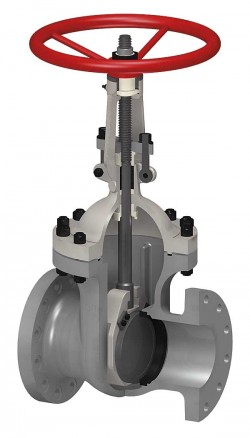
Type of Fluid: Different gate valves are suitable for different types of fluids. For example, certain materials used in the construction of the valve may be more resistant to corrosive fluids, while others may be suitable for handling high-temperature fluids.
Pressure and Temperature: The pressure and temperature that the valve will be subjected to are also important considerations. Some gate valves are designed to withstand high pressures and temperatures, while others are designed for lower pressure and temperature applications.
Valve Size: The size of the valve should match the size of the pipe in which it will be installed.
Operation: Consider how the valve will be operated. Some gate valves are manually operated using a handwheel, while others may be operated using an electric, pneumatic, or hydraulic actuator.
Sealing Requirements: If a tight seal is required when the valve is closed, you may want to consider a gate valve with a resilient seat.
Material: The material of the valve should be chosen based on the application. For example, stainless steel might be chosen for its corrosion resistance, while cast iron might be chosen for its durability and cost-effectiveness.
Standards and Certifications: The valve should meet any relevant industry standards and certifications, especially if it will be used in critical applications.
Maintenance: Consider the ease of maintenance. Some designs are easier to maintain than others.
Cost: Finally, the cost of the valve is always a consideration. It’s important to balance cost with the other factors to ensure you are getting a valve that will meet your needs and provide reliable service.
HELP YOU SELECT THE RIGHT VALVES
Send us a message if you have any questions about gate valves. Our experts will give you a reply with 24 hours to help you select the right valve you want.
Tel: +86-577-88893652
Email: [email protected]

